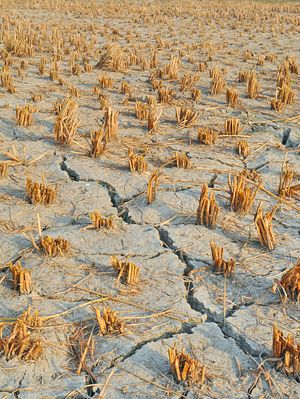The Diplomat has previously covered China’s water pollution crisis, with the Chinese government reporting that nearly 60 percent of China’s groundwater is polluted. But water scarcity, while obviously exacerbated by pollution, is also a severe problem for China, one that is tied up with complex questions about energy use, urbanization, and modernization.
Water issues were highlighted recently by Premier Li Keqiang. He urged local governments to accelerate their work on dealing with water issues, from water conservation to water diversion projects. In a visit to China’s Ministry of Water Resources, Li suggested providing more government funding for these projects and better support in the form of favorable policies. Trying to sweeten the deal, Li said such projects would also help “stabilize economic growth” by raising employment and investment levels.
Li’s personal attention to the matter emphasizes the urgency of addressing water issues in China, According to the World Bank, China has renewable internal freshwater resources of 2,071 cubic meters per capita, well above the UN definition of water scarcity as 1,000 cubic meters per person. But China’s water resources are not distributed equally. According to Choke Point: China, nearly 70 percent of water used in China goes to the agriculture sector, while 20 percent is used in the coal industry. Both of these industries – agriculture and coal – are concentrated in China’s north, which also happens to be an area of scarce rainfall, receiving only 20 percent of China’s total moisture. As a result, demand for water is outstripping supply. In northern China, the average water per capita is only around 200 cubic meters. In Beijing, consumption levels were 70 percent greater than the total water supply in 2012.
As Li’s remarks indicated, the Chinese government is very aware of the problem and is taking concrete steps to solve it, both by increasing efficiency and decreasing water use. Still, Beijing is struggling to adapt to the central problem. Thanks to urbanization and modernization, China’s water consumption is growing (projected to reach 670 billion cubic meters a year in the early 2020s, according to Choke Point: China) even while its water resources are dwindling – down 13 percent since 2000.
To solve the problem, since 2002 China has been working on a mega-project to bring water from the moisture-rich south to the arid north. The South-North Water Diversion Project will use three canals to move 44.8 billion cubic meters of water each year from the south to the north, according to The Atlantic. All told, the project is expected to cost over $60 billion; the Eastern and Central Canals are already functioning. But simply supplying more water won’t solve the underlying problem of inefficient water use and growing demand. In fact, the newly completed Central Canal won’t even make up the entire shortfall in Beijing’s water supply – and demand will only continue to increase.
There are potential solutions, but these have faced political opposition. The Economist argued that China could best address its problems by simply raising the price of water, particularly in regions where water is scarce. Officials have been reluctant to do this, however, for fear of driving away industries that support local economies. Without a strict policy on water conservation at the central level, local officials are unlikely to take action. As a result, China’s war on pollution, particularly air pollution, may prove to be simple in comparison to the potential water crisis currently brewing.

































